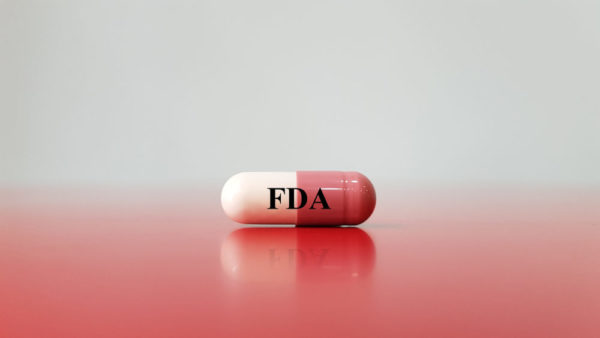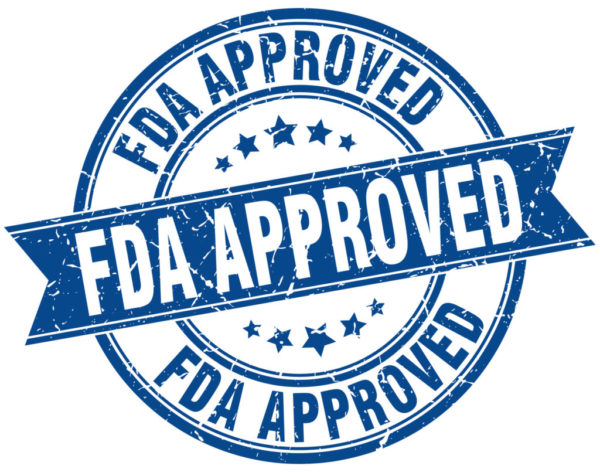The U.S. Food and Drug Administration (FDA) has established a lengthy review process where the government agency partners with drug companies to perform a series of safety tests designed to ensure new drugs are safe before they ever reach our medicine cabinets. The idea, of course, is to weed out any dangerous drugs before they ever have a chance to reach and harm the general population while still effectively and efficiently bringing important new medicines to market.  The FDA requires both preclinical testing (the drugs are first tried on animals instead of humans) and then, depending on the results, a drug may forward to the next phase of clinical evaluation which tests results and reactions on a steadily increasing number of human subjects. During this process, the FDA studies every aspect of the drug from its side effects to the quality of the drug’s ingredients. With all of these safeguards in place, it would seem likely that the FDA has created an ideal system for making sure only safe drugs become widely available. Too often in recent history, however, this has not been the case. Dangerous drugs have somehow still made their way to market harming tens of thousands of people and causing hundreds of millions of dollars of damage. Experts studying the system have often focused on the FDA’s use of the “Fast-Track” approval process for drugs intended to treat “serious or life-threatening conditions” and of the increasingly close relationship between private pharmaceutical companies and the public agency.
The FDA requires both preclinical testing (the drugs are first tried on animals instead of humans) and then, depending on the results, a drug may forward to the next phase of clinical evaluation which tests results and reactions on a steadily increasing number of human subjects. During this process, the FDA studies every aspect of the drug from its side effects to the quality of the drug’s ingredients. With all of these safeguards in place, it would seem likely that the FDA has created an ideal system for making sure only safe drugs become widely available. Too often in recent history, however, this has not been the case. Dangerous drugs have somehow still made their way to market harming tens of thousands of people and causing hundreds of millions of dollars of damage. Experts studying the system have often focused on the FDA’s use of the “Fast-Track” approval process for drugs intended to treat “serious or life-threatening conditions” and of the increasingly close relationship between private pharmaceutical companies and the public agency.
Table of Contents
Drug Development
New drugs must go through several phases of development before they reach the marketplace. After animal testing has been conducted to confirm preliminary safety of the drug, the sponsoring company provides to the FDA an Investigational New Drug Application, or IND. The IND reports to the FDA the results of the clinical testing in laboratory animals and reports what the drug company plans to undertake during clinical trials. The Investigational New Drug Application basically gives the FDA’s Center for Drug Evaluation and Research (CDER) the chance to evaluate whether the drug is safe for use in clinical trials. Once the IND has been reviewed by the FDA, a local panel of scientists and doctors on an Institutional Review Board (IRB) will then evaluate the planned clinical trials
Clinical Trials
The clinical trials are conducted in three different phases over the course of several years. Phase 1 clinical trial studies are carried out in healthy patients with about 20 to 80 healthy volunteers. The specific goal of Phase 1 is to identify the side effects of the drug and to see precisely how the drug is metabolized and excreted by the body. Once Phase 1 is complete and there are no overwhelming results of toxicity or other unsafe side effects, then Phase 2 of the clinical trials begins. The goal of Phase 2 clinical trials is to determine exactly how effective a drug is for its intended purpose. The scale of this trial is larger – 100 to 300 patients – and the idea is to order some preliminary data on these patients with a particular illness or condition. In controlled trials, the patients receiving the unapproved drug are compared to those patients receiving a placebo and evaluated for effectiveness and side effects. Once phase 2 comes to a close, the FDA and the company or organization sponsoring the clinical trials meet to decide how large-scale clinical trials in phase 3 should be conducted. This juncture represents one of the more important periods in the drug’s road to FDA approval, and is a period of intense conferencing between the drug company and the regulatory agency. Phase 3 advances only after completion of phase 2 where proof of the drug’s safety and effectiveness was demonstrated in a preliminary review. Phase 3 brings the testing sample up from 100-300 to 3,000 test patients. In a much larger sample, phase 3 affords the opportunity to gather more data about the safety and efficacy of the drug under review.
New Drug Application (NDA)
 The new drug application, or NDA, is the step a drug company takes after completion of the clinical trials. The NDA formally requests that the FDA consider for marketing a new drug in the United States. The NDA describes the new drug’s pharmacology, including how it’s manufactured and how it is metabolized by the body. The sponsoring drug company’s NDA contains all the information from the preclinical (animal) testing, as well as all analyses gleaned from the three phases of human clinical trials. Once the FDA has received a new NDA for consideration, the FDA decides within 60 days to file it for consideration or return the NDA to the drug company because some studies or essential data are missing. The FDA expects to review drugs within 10 months of receiving a NDA, and may even return an opinion on a new priority drug within six months. An FDA review team of doctors, scientists, and pharmacologists evaluate the sponsor’s NDA. The review team analyzes the data within the report, looking for flaws in the sponsor’s research models. If the drug company has submitted a flawed study to the team for review, it is their job to ferret out any such problems. Occasionally, the review team will require the advice of an advisory committee to pass judgment on a drug. This is not always the case.
The new drug application, or NDA, is the step a drug company takes after completion of the clinical trials. The NDA formally requests that the FDA consider for marketing a new drug in the United States. The NDA describes the new drug’s pharmacology, including how it’s manufactured and how it is metabolized by the body. The sponsoring drug company’s NDA contains all the information from the preclinical (animal) testing, as well as all analyses gleaned from the three phases of human clinical trials. Once the FDA has received a new NDA for consideration, the FDA decides within 60 days to file it for consideration or return the NDA to the drug company because some studies or essential data are missing. The FDA expects to review drugs within 10 months of receiving a NDA, and may even return an opinion on a new priority drug within six months. An FDA review team of doctors, scientists, and pharmacologists evaluate the sponsor’s NDA. The review team analyzes the data within the report, looking for flaws in the sponsor’s research models. If the drug company has submitted a flawed study to the team for review, it is their job to ferret out any such problems. Occasionally, the review team will require the advice of an advisory committee to pass judgment on a drug. This is not always the case.
New Drug Approval
The FDA, upon consideration on the sponsor’s NDA, will render a conditional approval, ask for more information, or return a determination of ‘not approvable.’ If the FDA determines that the drug is “approvable”, it means that there will likely be no problems in getting the drug streamlined through the process given the resolution of a few questionable issues concerning the drug. Something is normally amiss with the drug’s labeling or dosage information, for example. Many reasons could explain an FDA determination of ‘not approvable’, but typically the drug has an inherent problem with intended effectiveness or unresolved safety concerns. A ‘not approvable’ decision on an NDA means that the problems with the drug are significant enough that they cannot be foreseeably resolved, barring any substantial addition to the existing corpus of data. Drug companies frequently receive a ‘not approvable’ determination on an NDA when there are defects in manufacturing. A drug company may make small amounts of a drug for clinical trials, but then must switch suppliers when it ramps up the scale of production. During this process manufacturing problems may emerge that the drug maker did not expect, and these problems must be remedied if the drug is to be introduced into the market. After weighing all the above data presented, the FDA makes its final decision on the drug up for review. FDA scientists then meet with the drug company representatives to counter deficiencies in the drug or to decide on withdrawing the application entirely.
FDA Conflict of Interest
One of the main problems that exist in the regulatory process currently is the fact that the pharmaceutical industry now oversees all the clinical trials for their new drugs in development. The relationship between the FDA and the pharmaceutical industry is entirely too cozy, and this has led to the hasty approval of drugs that may have warranted closer scrutiny. One primary example of this is the painkiller Vioxx. Even though Merck’s clinical trials showed cardiovascular irregularities, the FDA and the drug company chose only to put a warning on the label. Vioxx, the cox-2 inhibitor, was recalled from the market after concerns were raised about increased risk of significant cardiovascular events for patients on the painkiller. This type of conflict demonstrates the serious safety risks that are a trade-off of financial dependence on the pharmaceutical industry for approval of drugs. In the 80s, before Congress passed the Prescription Drug User Fee Act (PDUFA), the approval process lasted at least two years. Public officials expressed their discontent and reworked the law so that the pharmaceutical industry played a role, both in funding and oversight. The time it took for drugs to be approved was reduced, but the number of recalled drugs increased dramatically, from 1.56% for 1993-1996 to 5.35% for 1997-2001. Read the next article: Over-the-Counter – How prescription medications, OTC drugs, herbs and dietary supplements can be a deadly combination









